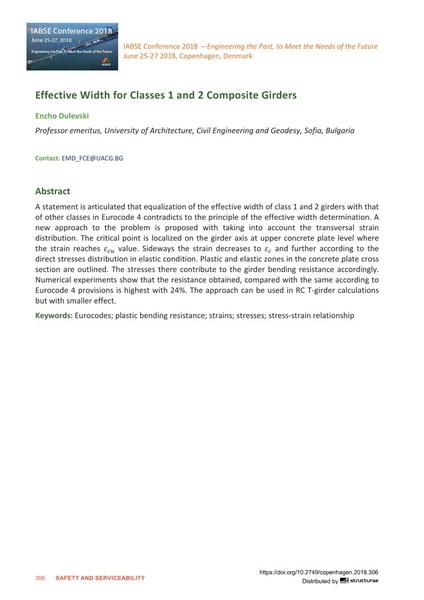| Médium: |
papier de conférence |
| Langue(s): |
anglais
|
| Conférence: |
IABSE Conference: Engineering the Past, to Meet the Needs of the Future, Copenhagen, Denmark, 25-27 June 2018 |
| Publié dans: |
IABSE Conference Copenhagen 2018 |
|
Page(s):
|
306-311
|
Nombre total de pages (du PDF): |
6 |
|
|
Page(s):
|
306-311
|
| Nombre total de pages (du PDF): |
6 |
| DOI: |
10.2749/copenhagen.2018.306 |
|
Abstrait:
|
A statement is articulated that equalization of the effective width of class 1 and 2 girders with that of other classes in Eurocode 4 contradicts to the principle of the effective width determination. A
new approach to the problem is proposed with taking into account the transversal strain
distribution. The critical point is localized on the girder axis at upper concrete plate level where
the strain reaches value. Sideways the strain decreases to and further according to the
direct stresses distribution in elastic condition. Plastic and elastic zones in the concrete plate cross
section are outlined. The stresses there contribute to the girder bending resistance accordingly.
Numerical experiments show that the resistance obtained, compared with the same according to
Eurocode 4 provisions is highest with 24%. The approach can be used in RC T-girder calculations
but with smaller effect.
|

